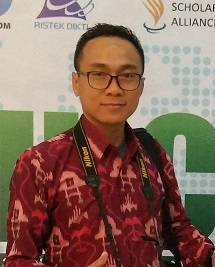Implementasi Pembelajaran Nilai-Nilai Pancasila Sebagai Upaya Mitigasi Bencana Sosial Konflik Antar Etnis di NTB
DOI:
https://doi.org/10.29408/geodika.v4i1.1938Keywords:
interethnic conflict, pancasila values, social disaster mitigationAbstract
West Nusa Tenggara is a province inhabited by three main ethnic groups namely the Sasak, Samawa, and Mbojo tribes. Several problems triggered inter-ethnic conflict in West Nusa Tenggara, causing losses. This study aims to: 1) find out the root causes of inter-ethnic conflict in West Nusa Tenggara; 2) knowing how to respond to social disasters between ethnic conflicts; 3) formulating the concept of the values of Pancasila as a basis for learning disaster mitigation between ethnic conflicts. This research uses descriptive method with historiographic approach. Data are systematically collected and analyzed, especially those related to inter-ethnic conflict in NTB in the past. The results of the research show: 1) the background of inter-ethnic conflict in NTB is dominated by lack of communication, interests, emotional involvement, and weak self-control so that people are easily provoked; 2) social disasters between ethnic conflicts can be addressed or anticipated by learning in schools, especially using video media, so that it is known how inter-ethnic conflict occurs, what are the losses incurred, conclude and provide positive advice in overcoming ethnic conflict through group discussions; 3) the concept of Pancasila values that can be implemented in learning to minimize conflicts between ethnic groups, among others, believe in the unity of God, the creator of the environment and the universe and their contents, maintaining order, respecting the opinions of others, helping one another when conflicts occur and not damaging the environment and other public facilities.
References
Agung, I. (2011). Konflik antar kelompok: perspektif psikologi sosial (Conflict intergroup: Social psychological perspective). Available at SSRN 2552360.
Akhmad, R. (2020). Bahan ajar pendidikan sosial budaya; kajian geografi sosial budaya Pulau Lombok. Selong: Universitas Hamzanwadi Press.
Akhyar, M. N. (2015). Bentrok antarwarga di Bima, dua tewas. Diakses tanggal 09 Juni 2020, dari https://nasional.tempo.co/read/721046/bentrok-antarwarga-di-bima-dua-tewas/full&view=ok
Badan Pusat Statistik NTB. (2017). Provinsi Nusa Tenggara Barat dalam Angka 2017. Mataram: BPS Nusa Tenggara Barat.
Badan Pusat Statistik NTB. (2018). Statistika Kriminalitas Provinsi Nusa Tenggara Barat 2018. Mataram: BPS Nusa Tenggara Barat.
Budasi, I. G. (2015). Pembeda fonologis dan leksikal antara bahasa Sawu di NTT dan bahasa Bima di NTB. In the 7th International Seminar on Austronesian-non Austronesian Languages and Literature.
Hashim, A. T., Bakar, I. A., Osman, R., Mamat, N., & Razali, A. R. (2015). Strengthening relationship among multi-ethnic students in Malaysia. Journal of Research, Policy & Practice of Teachers & Teacher Education (JRPPTTE), 5(1), 17-29.
Hatta, R.T. (2013). Bentrok antar etnis terjadi di Sumbawa. Diakses tanggal 15 Februari 2020, dari http://news.liputan6.com/read/494122/bentrok-antar-etnis-terjadi-di-sumbawa.
Irwanto, D., & Sair, A. (2014). Metodologi dan historiografi sejarah. Yogyakarta: Eja_Publisher.
Iskandar, S. (2013). Inter-ethnic conflict Samawa and Bali in Sumbawa, Indonesia. International Institute for Science, Technology and Education, 3(20), 40-44.
Maarif, S. (2011). Meningkatkan kapasitas masyarakat dalam mengatasi risiko bencana kekeringan. Jurnal Sains dan Teknologi Indonesia, 13(2), 65-73.
Mantja, L. (1984). Sumbawa pada masa dulu: suatu tinjauan sejarah. Rinta.
Marzuki, M. (2010). Perspektif etnik situasional dalam komunikasi politik anggota DPRD pada wilayah multi etnik. Academica, 2(2), 402-412.
Muslimah, F. (2017). Mengenal islam di Lombok lewat kampung muslim wetu telu. Diakses tanggal 10 Juni 2020, dari https://www.gomuslim.co.id/read/destinasi/2017/01/01/2761/mengenal-islam-di-lombok-lewat-kampung-muslim-wetu-telu.html
Paridi, K., Sudika, I. N., & Burhanuddin, B. (2018). Penyuluhan standardisasi sistem fonologi bahasa Sumbawa. Jurnal Pendidikan dan Pengabdian Masyarakat, 1(2), 223-224.
Pemkab Bima (2015). Sejarah Bima. Diakses tanggal 12 Juni 2020 dari https://pulausumbawanews.net/index.php/2015/06/26/sejarah-bima/
Pramono, W. I., & Munandar, A. I. (2020). Peran undang-undang ormas terhadap penyelesaian konflik antar ormas. Jurnal Ilmiah Living Law, 12(1), 52-62.
Rahardjo, T. (2010). Memahami kemajemukan masyarakat Indonesia (Perspektif komunikasi antarbudaya) (Doctoral dissertation, Diponegoro University).
Asmara, N.S. (2016). Konflik ideologi buruh kereta api tahun 1949-1965. Avatara, e-Jurnal Pendidikan Sejarah, 4(3), 1215-1229.
Sitompul, M. (2013). Kerusuhan Sumbawa akibat tokoh agama tak didengar. Diakses tanggal 17 Juni 2020 dari https://inilah.com/news/1950430/kerusuhan-sumbawa-akibat-tokoh-agama- tak-didengar
Siradjuddin, S. (2015). Akar-akar konflik fundamental perspektif ekonomi politik. Jurnal Iqtisaduna, 1(2), 17-39.
Sumardiana, B. (2016). Formulasi kebijakan penanganan tindak pidana berbasis isu sara dalam pemilihan umum. Pandecta: Research Law Journal, 11(1), 80-95.
Wildani, R. F. (2014). Suku Sasak yang tak mau diinjak. Diakses tanggal 11 Juni 2020, dari https://rfwildaniweb.wordpress.com/2014/06/20/suku-sasak-yang-tak-mau-diinjak/
Baihaki, M. (2014). Nyongkolan berakhir tawuran di Lombok Tengah, NTB. Diakses tanggal 11 Juni 2020 darihttps://www.youtube.com/watch?v=u6wST9cfAGk)
Sumitre, M. (2013). Kerusuhan Sumbawa: selain perusakan, massa juga melakukan penjarahan. Diakses tenggal 11 Juni 2020 dari https://sumitremade.wordpress.com/2013/01/22/kerusuhan-sumbawa-selain-perusakan-masa-juga-melakukan-penjarahan/#more-4214








